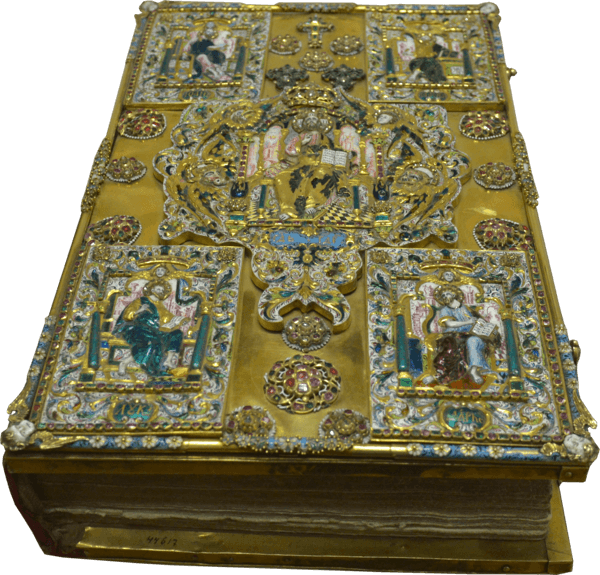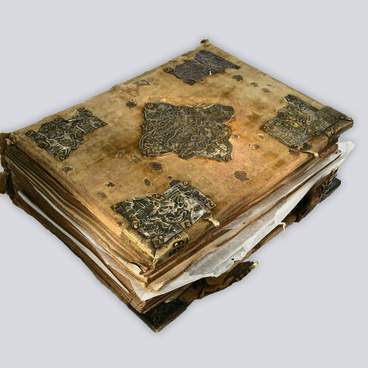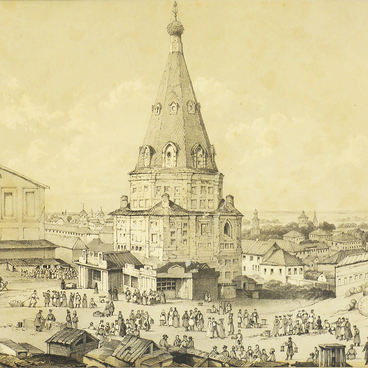On display, there is Adrian’s Gospel published in Old Slavonic in Moscow in 1682.
1 / 2
Adrian’s Gospel
Creation period
1682, last quarter of the 17th century (icon cover)
Dimensions
48x32 cm
Technique
chiselling, enamel, inlay, letterpress printing, colouring
Exhibition
4
Open in app#1
Adrian’s Gospel
#5
#6
The book is contained in a gold cover decorated with gems: emeralds, rubies, and diamonds. It has a centre piece, an embossed image of the Saviour on the throne. In the corners of the cover, there are the four evangelists: Matthew, Mark, Luke, and John. The centre piece and corner pieces are decorated with bright paintings on enamel and embossed flowers. The background is covered with 16 gold and silver decorative plaques with inlaid gems.
#7
Explorers believe that the book cover was made by the Stroganov works in the city of Sol-Vychegodsk[1]. It was designed to not only decorate the Gospel, but also protect the binding and pages from damage.
#2
The Gospel was named after Adrian, the Patriarch of Moscow and All Russia. He used to be the archimandrite of the Chudov monastery for nine years. Under his supervision, the Holy Virgin’s Annunciation Cathedral was built there. Adrian assisted greatly in the arrangement of the monastery which, too, was redesigned on his initiative.
#8
During the Moscow revolt, Adrian provided assistance to Patriarch Joachim who later promoted him to Metropolitan of Kazan and Sviyazhsk with the consent of the Regent Sophia Alexeyevna’s government. We don’t know much about Adrian’s activities in Kazan, but historians note that within four years time, he enriched the Kazan Annunciation Cathedral considerably and wrote a tract against schismatics. In 1690, Adrian became Patriarch of Moscow and All Russia. His contemporaries said he always appealed to his flock’s ethics and morals, trying to inspire consciousness in them rather than fear.
#9
Adrian’s relations with Peter I were controversial. On the one hand, the patriarch didn’t share the king’s novel views, at the same time he supported his popular education reform. He refused to make Peter’s first wife, Eudoxia Feodorovna, a nun but never opposed the tsar’s decrees restricting the clergy’s independence in Russia. And when Adrian passed away in 1700, Peter I did not attend the burial service, an unprecedented event in Russian history.
#4
The Gospel on display was given by Adrian to Markel, his successor as the metropolitan of Kazan, on the 25th day of December 7200 anno mundi, i. e., in 1692, which is testified by the carved gift inscription on the lower part of the book cover.
#10
National Museum of the Republic of Tatarstan
read morehide
00:00
00:00
1x
Adrian’s Gospel
Creation period
1682, last quarter of the 17th century (icon cover)
Dimensions
48x32 cm
Technique
chiselling, enamel, inlay, letterpress printing, colouring
Exhibition
4
Open in app
Share



